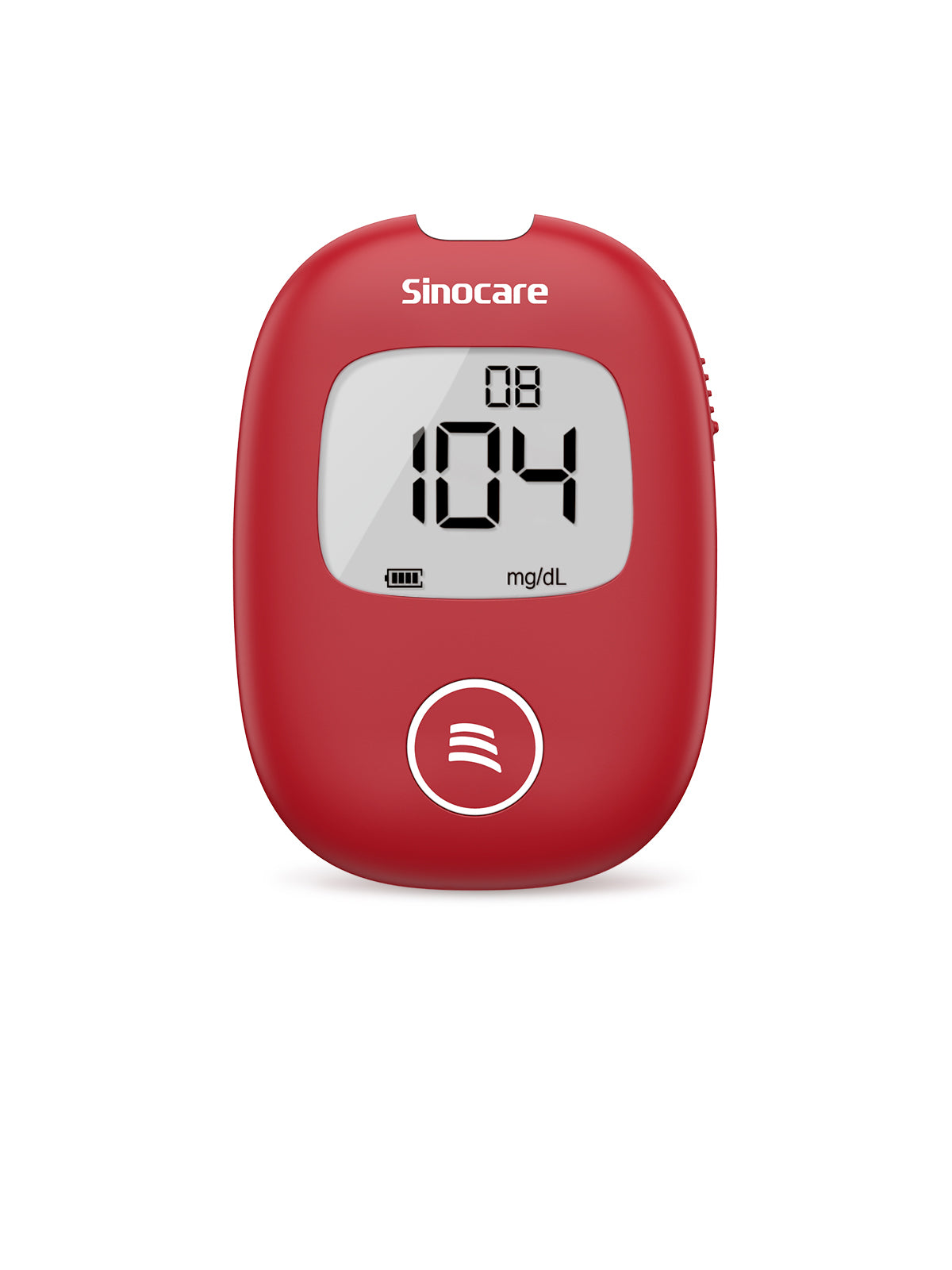Content Menu:
- What is Blood Sugar Level ?
- What is a blood glucose test?
- How and When to Test Your Blood Sugar With Diabetes
- 6 Keys to Successful Blood Sugar Monitoring At Home
1. What is Blood Sugar Level ?
Blood glucose levels are the amount of glucose that someone has in their blood at any given time. Blood sugar levels change throughout the day. Typically, blood sugar levels are at their lowest first thing in the morning or after a period of fasting. Blood sugar levels increase during and after meals, as the body digests food.
Having high or low blood sugar levels could indicate an underlying health condition that may require medical attention. Use this overview of normal blood glucose levels to understand what your blood sugar levels mean. People without diabetes typically have between 72-140 milligrams of glucose per 1 deciliter of blood.
The following chart outlines normal blood sugar ranges for people with and without diabetes, depending on the time of day:
|
Time of day |
Target blood sugar for people without diabetes |
Target blood sugar for people with diabetes |
|
Before meals or while fasting |
72–99 mg/dL |
80–130 mg/dL |
|
2 hours after the start of a meal |
less than 140 mg/dL |
less than 180 mg/dL |
|
A1C results: Average over a 3-month period |
less than 5.7% |
less than 7% |
2. What is a blood glucose test?
Blood Glucose testing is an important part of diabetes care. Blood glucose monitoring is the regular check of blood glucose level. The implementation of blood glucose monitoring can better control the blood glucose changes of diabetic patients, and has important guiding significance for life rules, activities, exercise, diet and rational use of drugs, and can help patients find problems at any time and seek medical treatment in time.
If you have diabetes, self-testing your blood sugar (blood glucose) can be an important tool in managing your diabetes and preventing complications. You can test your blood sugar at home with a portable electronic device called a blood sugar meter using a small drop of your blood. You can also use a device called a continuous glucose monitor (CGM).
3. How and When to Test Your Blood Sugar With Diabetes?
If you are a Diabetic, Blood Glucose testing is an important part of diabetes care. You Need Check Blood Sugar (glucose) levels regularly with monitor (blood glucose meter).
There are several ways to test your blood sugar:
From Your Fingertip: You prick your finger with a small, sharp needle (called a lancet) and put a drop of blood on a test strip. Then you put the test strip into a meter that shows your blood sugar level. You get results in less than 15 seconds and can store this information for future use.
Continuous Glucose Monitoring System: These devices, also called interstitial glucose measuring devices, are combined with insulin pumps. They are similar to finger-stick glucose results and can show patterns and trends in your results over time.
A blood sugar meter measures the amount of glucose in a drop of blood, usually from the finger.
Follow these steps when using a blood sugar meter:
Thoroughly wash the hands and disinfect the meter.
Gather the meter, a test strip, a lancet, and an alcohol wipe.
Rub the hands together to encourage blood flow to the fingertips.
Turn the meter on and insert the test strip.
Wipe the fingertip with the alcohol pad and let the alcohol evaporate.
Prick the finger with the lancet.
Gently squeeze at the base of the finger until a drop of blood forms on the fingertip.
Place the blood droplet on the test strip.
Wait for the meter to display the blood sugar measurement.
Record the results, adding notes about anything that may have contributed to an abnormal reading, such as food or physical activity.
Properly dispose of the wipe, lancet, and test strip.
How to use Safe AQ Smart Blood Glucose Meter – Videos Show
What happens during a blood glucose test?
A health care professional will take a blood sample from a vein in your arm, using a small needle. After the needle is inserted, a small amount of blood will be collected into a test tube or vial. You may feel a little sting when the needle goes in or out. For some types of glucose blood tests, you will need to drink a sugary drink before your blood is drawn.
If you have diabetes, your health care provider may recommend a kit to monitor your blood sugar at home. Most kits include a device to prick your finger (lancet). You will use this to collect a drop of blood for testing. There are some newer kits available that don’t require pricking your finger. For more information on at-home test kits, talk to your health care provider.
Will I need to do anything to prepare for the test?
You will probably need to fast (not eat or drink) for eight hours before the test. If you are pregnant and are being checked for gestational diabetes:
- You will drink a sugary liquid one hour before your blood is drawn.
- You won't need to fast for this test.
- If your results show higher than normal blood glucose levels, you may need another test, which requires fasting.
Talk to your health provider about specific preparations needed for your glucose test.
Are there any risks to the test?
There is very little risk to having a blood test. You may have slight pain or bruising at the spot where the needle was put in, but most symptoms go away quickly.
What do the results mean?
If your results show higher than normal glucose levels, it may mean you have or are at risk for getting diabetes. High glucose levels may also be a sign of:
- Kidney disease
- Hyperthyroidism
- Pancreatitis
- Pancreatic cancer
If your results show lower than normal glucose levels, it may be a sign of:
- Hypothyroidism
- Too much insulin or other diabetes medicine
- Liver disease
If your glucose results are not normal, it doesn't necessarily mean you have a medical condition needing treatment. High stress and certain medicines can affect glucose levels. To learn what your results mean, talk to your health care provider.
4. Six Keys for successful blood sugar monitoring
1. Keep your meter and supplies with you at all timesThis includes lancets, alcohol swabs, testing strips, and anything else you use to monitor your blood sugar.
2. Keep track of your testing stripsMake sure your strips aren't expired. Out-of-date strips aren't guaranteed to return true results. Old strips and inaccurate results may affect your daily log of blood glucose numbers, and your doctor may think there’s a problem when there really isn't.
Also, keep the strips out of sunlight and away from moisture. It’s best to keep them at room temperature or cooler, but not freezing.
3. Establish a routine for how often and when you should test your blood sugar.Work with your doctor to plan your routine. They may suggest checking it while you're fasting, before and after meals, or before bedtime. Each person's situation is different, so it’s important to decide on an arrangement that will work for you.
When you've set that schedule, make checking your blood part of your daily routine. Build it into your day. Many meters have alarms you can set to help you to remember to test. When testing becomes a part of your day, you'll be less likely to forget.
4. Don't assume that your meter is correctMost meters come with a control solution that allows you to test to see how accurate your meter and strips are.
Take your blood glucose meter to your next doctor's appointment. Compare your results with those of their machine to see if there are any discrepancies.
5. Create a journal to log your blood sugar each time you test it.There are also apps available that can help you track this information and keep a running tally of your average blood sugar. You may also want to record the time of day you're testing and how long it's been since you last ate.
This information will help your doctor track your blood sugar and can be important when diagnosing what's causing your blood sugar to spike.
6. Take steps to prevent infection To avoid infection, practice the strategies advised by the Centers for Disease Control and Prevention. Trusted Source for safe injections. Don't share your blood sugar monitoring equipment with anyone else, dispose of the lancet and strip after each use, and be careful to wait until your finger has stopped bleeding to resume your activities.









1 comment
Bouda
Salut, comme interprétation le résultat ?
Le moniteur affiche 6,3mm/l.
Leave a comment
All comments are moderated before being published.
This site is protected by hCaptcha and the hCaptcha Privacy Policy and Terms of Service apply.